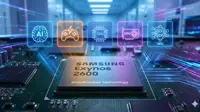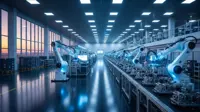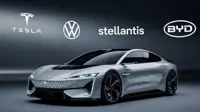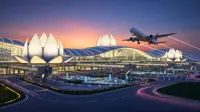Indian IT spending to reach $73.3 bn in 2015: Gartner
15 Oct 2014
IT spending in India is projected to total $73.3 billion in 2015, a 9.4-per cent rise from the $67.1 billion forecast for 2014.
In 2014, mobile devices will grow 13.5 per cent, and will dislodge mobile voice services to become the largest segment within the overall IT market in India, according to a study by global research and analysis firm Gartner.
''India is forecast to be the third largest IT market within the Asia-Pacific (APAC) region by the end of 2016 and will further progress to become the second largest market for IT by the end of 2018," said Peter Sondergaard, senior vice president and global head of Research at Gartner.
Sondergaard added, "Much of the growth from being the number four market in APAC to number three is likely to happen in 2015.''
IT services will record the strongest revenue growth at 15.7 per cent in 2015; software will grow at 14 per cent. Devices will continue to account for the second largest part of the market with 33 per cent share of revenue and will grow 12.6 per cent in 2015.
The telecommunication services segment will account for 39.3 per cent of the Indian ICT market and it is set to grow at 4.2 per cent revenue growth in 2015.
''IT spending in India is on pace to increase 2.9 per cent this year, primarily on the back of strong growth within the IT services and software, which will grow 10.5 per cent and 9.6 per cent,'' said Partha Iyengar, distinguished analyst and Gartner India head of research.
In 2014, mobile devices will grow 13.5 per cent, and will dislodge mobile voice services to be the largest segment within the overall IT market in India. Mobile data services will be the fastest growing segment in India, growing 18.2 per cent in 2014. Telecommunication services that will account for 41.4 per cent of overall IT spend, and it will decline 0.7 per cent in 2014.
''The impact that the digital business economy is having on the IT industry is dramatic. Since 2013, 650 million new physical objects have come online. 3D printers became a billion dollar market; 10 per cent of automobiles became connected; and the number of Chief Data Officers and Chief Digital Officer positions have doubled. In 2015, all of these things will double again,'' said Sondergaard.
''This year enterprises will spend over $40 billion designing, implementing and operating the Internet of Things,'' Sondergaard said. ''Every piece of equipment, anything of value, will have embedded sensors. This means leading asset-intensive enterprises will have over half a million IP addressable objects in 2020.''
''Thirty-eight percent of the total IT spend is outside of IT already, with a disproportionate amount in digital. By 2017, it will be over 50 per cent. Digital startups sit inside your own organisation, in your marketing department, in HR, in logistics and in sales. Your business units are acting as technology startups,'' said Sondergaard.
Gartner estimates that 50 per cent of all technology sales people are actively selling direct to business units, not IT departments. Millions of sales people and hundreds of thousands of resellers and channel partners are looking for new money flows in the fluid digital world, and they are finding eager buyers.
Bimodal IT fills the digital divide between what IT provides and what the enterprise really needs. Mode 1 is traditional, and the systems that support them must be reliable, predictable, and safe (like a great IT organisation). Mode 2 is non-sequential, emphasising agility and speed (like a startup) because disruption can occur at anytime.
Sondergaard used the example of smart machines to highlight the disruption caused in digital business. Smart machines are an emerging ''super class'' of technologies that perform a wide variety of work, of both the physical and the intellectual kind. For example, school computers have been grading multiple tests for many years, and now they are grading essays, unstructured tests that require analysis.
''Not is the grading more accurate, but students actually worked harder on their essays when they are graded by a smart machine,'' Sondergaard said. ''Other professional tasks won't be far behind: financial analysts, medical diagnostics, and data analytics jobs will be impacted. Knowledge work will be automated.
Smart robots will appear not just on the manufacturing floor, where they do physical work, but in the workplace and even in the home. Smart machines will automate decision making. Therefore, they will not only affect jobs based on physical labor, but they will also impact jobs based on complex knowledge worker tasks.
Digital businesses will impact jobs in different ways. By 2018, digital businesses will require 50 per cent fewer business process workers. However, by 2018 digital business will drive a 500 per cent boost in digital jobs.
| ||||||||||||||||||||||||||||||||







.webp)














